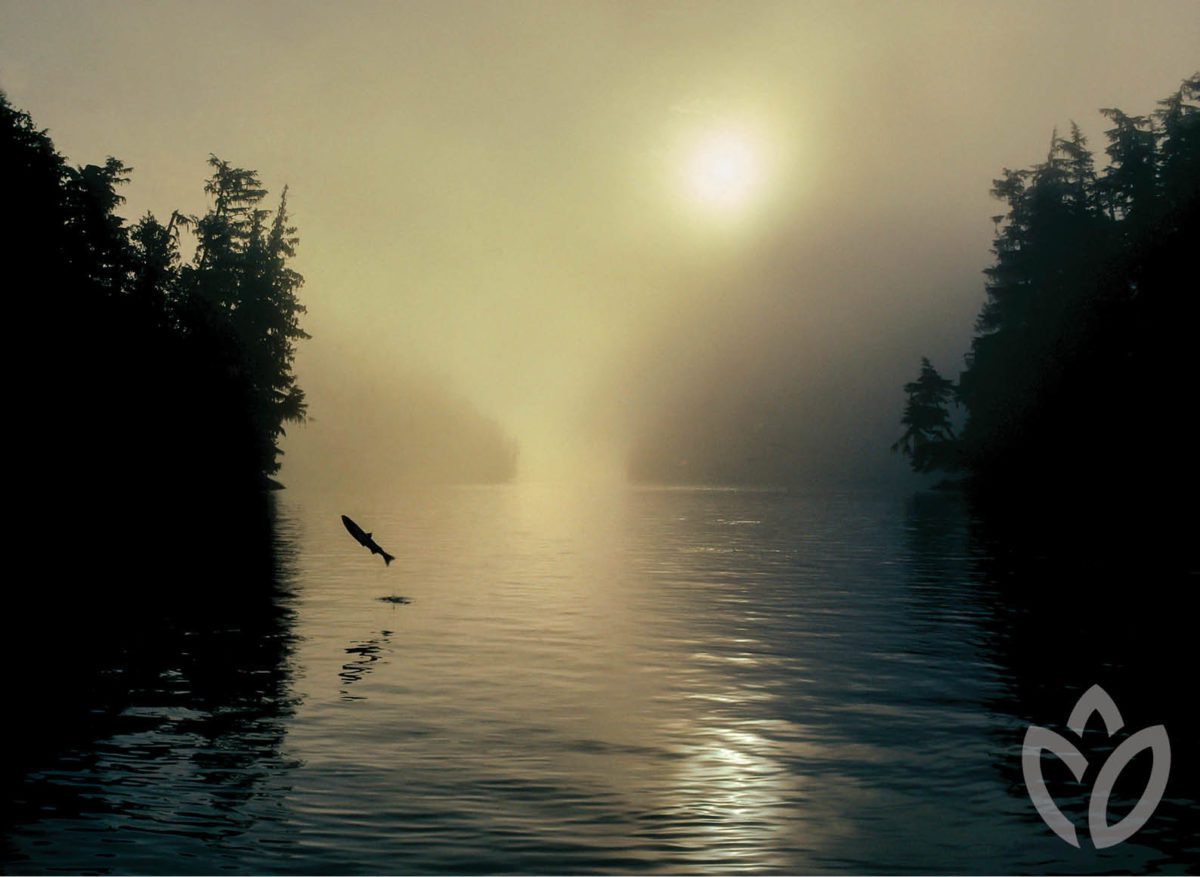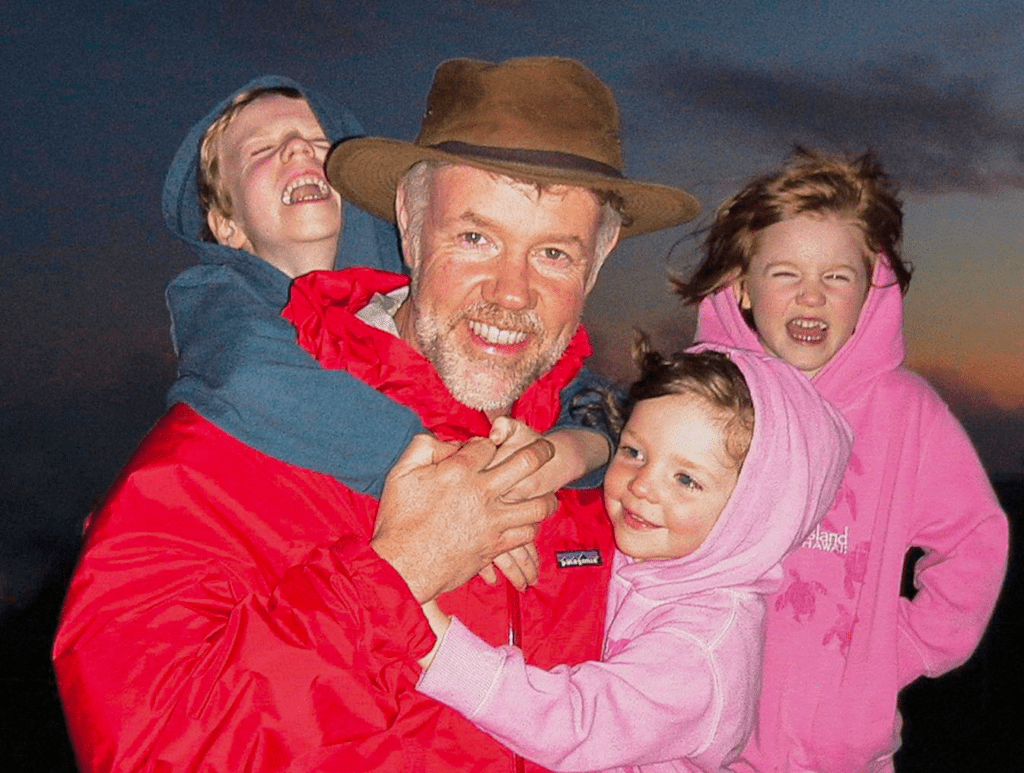
Mist-ical Salmon by Graham Osborne
I barely dipped an oar as I drifted into the deep robin’s egg blue of last light. It had been a long day and I was exhausted after a bushwhack deep into the Koeye River watershed in the heart of British Columbia’s mid-coast. Eddies swirled in the darkness as I slipped peacefully into the brackish estuary waters.
But as I approached our anchored research vessel, distant sounds in the gathering darkness caught my attention. Rhythmic splashing seemed to be growing louder and more frequent at my approach. I strained into the darkness, but couldn’t identify the source. But one thing was for sure: the great splashes were definitely growing in number, and soon I was surrounded. It was as if a gang of school boys were tossing big rocks at me from the distant bank – but I knew this was something else. “Salmon!” I gasped to myself. There were literally hundreds, maybe thousands of salmon, swirling all around my boat.
The darkness insured there would be no images tonight, but my mind immediately raced to morning, quickly pre-visualizing a golden sunrise with a leaping salmon silhouetted perfectly against first light. Maybe add some mist? Sure why not! “I love mist!” I thought to myself. That was that. I had slept less than 4 hours the previous two nights, and it looked like the pattern was about to repeat.
Four am came disturbingly quickly, but I literally leapt up with my alarm, fully functional and grabbing gear quickly as I moved for the dory. I had begged for a volunteer “chief engineer” to hold my boat in position in the current and somehow managed one taker.
As I climbed on deck, I drew a sharp breath. There was the beginning of a deep golden glow in the east, and gentle mist trimmed the glassy waters of the estuary. In the distance I could make out the rising forms of multiple salmon splashing playfully. The run of pink salmon from the previous night had held their position. The scene unfolding before me was breathtaking!
Dropping gingerly into the boat, we glided silently on a rising tide into the school of salmon. I pulled out my wide angle lens and framed the scene, noting the beautiful silhouette of mist-framed old growth cedars trimming the indented shoreline.
There were occasional salmon leaping near the boat, but they were teasingly unpredictable. After missing several jumps, I realized I could not see them properly through the wide perspective of the camera viewfinder. I would need to pre-frame my shot and then actually look over the viewfinder to spot the salmon as they leapt, trying to time my shutter release with the pinnacle of a leap, but also hoping that the salmon would cooperate, and leap in just the right position for my composition. I held my breath and waited and prayed.
Several good salmon splashed heavily down before I was even able to release my shutter. I had missed them all. “Too slow!” I was my own worst critic. I gripped my camera a little tighter as I watched the misty golden disc of the sun rise in perfect position. Stunning! It was better than I could have imagined.
Suddenly, one particularly hefty hen launched herself into the air in a perfectly clean, Olympic-qualifying, double salchow. The quick snap of my shutter felt good. The timing seemed right. But had I got it???
These were not the days of digital. And as I marked that roll of Kodachrome and stuffed it deep into my pocket, I could only hope that what I had seen had been captured on film: properly exposed, good composition, good color, no hint of camera shake, the speed of the jump frozen – everything technically sharp.
Two weeks later, I held my breath as I edited slides on my light table. To my excitement, frame 24 revealed a glorious moment. It had been an amazingly memorable morning. And now I had a true reminder of it frozen in time.
On Assignment for The Nature Trust of BC
Graham Osborne — an award-winning professional nature photographer and biologist — has been quietly, patiently, persistently working to capture the majesty of nature through his lens. From his very first photo nearly 40 years ago, this scientists turned photographer became a champion of The Nature Trust of BC. He has traveled to our conservation properties, left nothing but footprints, and captured images of the light and landscapes that remind us of why we do the work we do.

